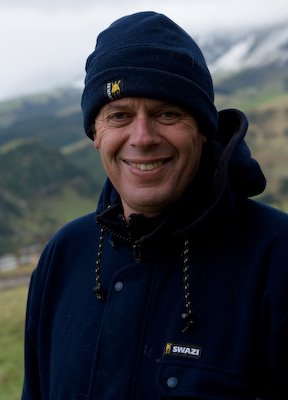Ideaflow

Kia ora tatou:
Over the last few months, as I have travelled, I have spent time amongst Maori communities, including Ngati Whakaue, Tuhoe and Taranaki. I have come to realise that for them their treasures are not so much material as historical. Their stories are what they really treasure, for the histories that surround them connect them to Place and Time. They do not give these lightly. Well, why would they? How ready would we be to hand our Ming vases to a stranger? And I began to realise how much the stories of a particular place inform my own picture making. I realised whenever I show my own work, there is a story I want to share. Which means that some memory or story however half-heard has an effect on my workflow and my ideaflow. Case in point:
We were travelling on a particularly inclement day up the Haast River when a slip on the road ahead meant we had to wait. So we took the time to make some photographs at a creek with the curious name of Roaring Swine (I would love to know the story behind that name!). I had been telling the others about Julius von Haast and his adventures exploring the region. Being one for historical trivia, I remembered the story as him and his Maori companion(s) along with a diminishing number of dogs as the food ran out, and how they would light a fire and then stand around naked while their garments dried. I imagined the thoughts they must have had as they made their way up an alien and forbidding landscape. It must have been quite horrifying at times.
As I walked around the area looking at the landscape, I looked at the forbidding and inhospitable environment. The clouds slithered and slunk their way along the ridges. In some way it reminded me of those old photographs from the 19th Century, made using orthochromatic materials, where the skies are white and it looks as if it rained every day, the ones where they print the details into the image and then make sepia prints. You might be interested to know that sepia toning was not a cool artistic thing, but was done for a very practical reason, namely to improve the lifespan of finished images.
Somehow the story and the memory of those old photographs came together. I wanted to show the landscape as a dark, gloomy and forbidding place, and at the same time reference both Haast’s experience and those old historical photographs.
So I made a number of photographs, looking at the cloud as it shambled like an ill-kempt dog along the hillsides.
Later I opened one up in PhotoShop. I converted it to greyscale, using the Custom RGB to Greyscale action in the Productions tab. I made sure I kept the sky values high and the shadows low by adjusting the sliders in each channel. I wanted deep shadows and slightly overbright skies.
I the added a curves adjustment layer. I pinned the shadows and highlight by clicking on those values in the image, noting where they fell on the curve and clicking those points on the curve. I then tweaked the midtones, trending them down. I finally flattened the layer.
The next step was to convert the image to a duotone. I used a Pantone mid-brown and again tweaked the curve to give a non-linear result.
Finally I added a text layer, and added some descriptive text, trying to emulate the effect of a hand-printed label. I lowered the opacity so the background image showed through.
A final flatten and save.
The point I am trying to make here is that there is another way of working. We have all heard of workflow, the process of editing and working to a final result. I would like to suggest that there is another equally important process-ideaflow. To have a satisfying result that informs, you need to spend time thinking through all the parts that inform the whole. Ideaflow comes before and feeds into workflow.
To do otherwise is to be content to place your feet in the footsteps of others and follow their path.
To share the grey joys of plagiarism.
Ka kite ano


1 Comments:
Tony,I love this .It looks just like Chinese ink painting.The feeling is so good.I had learned chinese painting a long time ago and this remind me of the old time.Ray
Post a Comment
<< Home